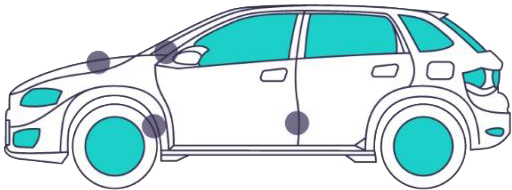When it involves the circulatory system, arteries and blood vessels play vital roles in guaranteeing the appropriate performance of our bodies. While both are capillary in charge of delivering blood, arteries as well as capillaries have distinct attributes and also features. In this article, we will certainly delve into the essential distinctions in between arteries and also veins, clarifying their structures, functions, as well as distinct attributes.
Arteries are thick-walled capillary that bring oxygenated blood away from the heart and also supply it to various parts of the body. They have a crucial function in supplying oxygen and also vital nutrients to our body organs, cells, and cells. Arteries are constructed to hold up against high pressure as they obtain blood pumped straight from the heart.
The wall surfaces of arteries contain 3 distinctive layers. The innermost layer, called the endothelium, gives a smooth surface area for blood circulation. The middle layer, referred to as the tunica media, is composed of smooth muscle mass cells and also flexible fibers, permitting arteries to increase as well as get in response to the heart’s pumping activity. The outer layer, called the tunica adventitia, secures and also supports the artery.
Arteries generally have a round or tubular shape and are much deeper within the body, living closer to the bones. They have a pulsating rhythm as they broaden and agreement with each heart beat. The largest artery in the body is the aorta, which emerges from the left ventricle of the heart and also branch off to provide blood to all various other arteries.
Veins, on the other hand, are blood vessels responsible for carrying deoxygenated blood back to the heart. They play a vital role in the process of eliminating waste items, such as carbon dioxide, from our body organs and tissues. While blood vessels are not as muscular or elastic as arteries, they have special systems to help with the return of blood to the heart regardless of reduced pressure.
The walls of veins are thinner contrasted to arteries and contain the very same 3 layers: endothelium, tunica media, and tunica adventitia. Nevertheless, veins have actually valves strategically placed along their size. These shutoffs stop the backward circulation of blood, guaranteeing that it relocates only in one direction in the direction of the heart.
Veins generally show up blue or environment-friendly as a result of the deoxygenated blood they carry. Unlike arteries, blood vessels have a less defined form, usually appearing flattened or broken down. They lie better to the surface area of the body, rushing with the muscular tissues and cells. In addition, capillaries can expand to suit a bigger volume of blood when required.
While the key feature of arteries is to bring oxygenated blood far from the heart and that of blood vessels is to return deoxygenated blood to the heart, there are several other noteworthy distinctions between both:
Understanding the distinctions in between arteries and also blood vessels is important for understanding the complexities of the blood circulation system. While arteries are in charge of providing oxygen-rich blood to our body organs, blood vessels play an essential role in returning deoxygenated blood to the heart. Their distinct attributes and functions add to the seamless functioning of our bodies.
In conclusion, arteries and blood vessels are essential parts of the blood circulation system, interacting to make sure the correct performance of our bodies. Arteries supply oxygenated blood far from the heart, defined by their thick walls and vibrating rhythm. On the various other hand, veins return deoxygenated blood to the heart, featuring thinner wall surfaces and valves. While both share comparable three-layered frameworks, their special qualities and also functions distinguish them in the detailed internet of the human circulatory system.
Properly fitted compression stockings ought депантен to feel snug yet not as well tight.
Copyright 2022 © Theme Created By ScriptsBundle, All Rights Reserved.

The VIN is a unique identification number for your vehicle. It is 17 characters in length.
Visible through the bottom of the windscreen
Under the bonnet, usually at the front or back
Some utes and 4WDs, visible within a wheel arch
Open the door and look on the frame

The VIN is a unique identification number for your vehicle. It is 17 characters in length.
Visible through the bottom of the windscreen
Under the bonnet, usually at the front or back
Some utes and 4WDs, visible within a wheel arch
Open the door and look on the frame
Leave Your Comment